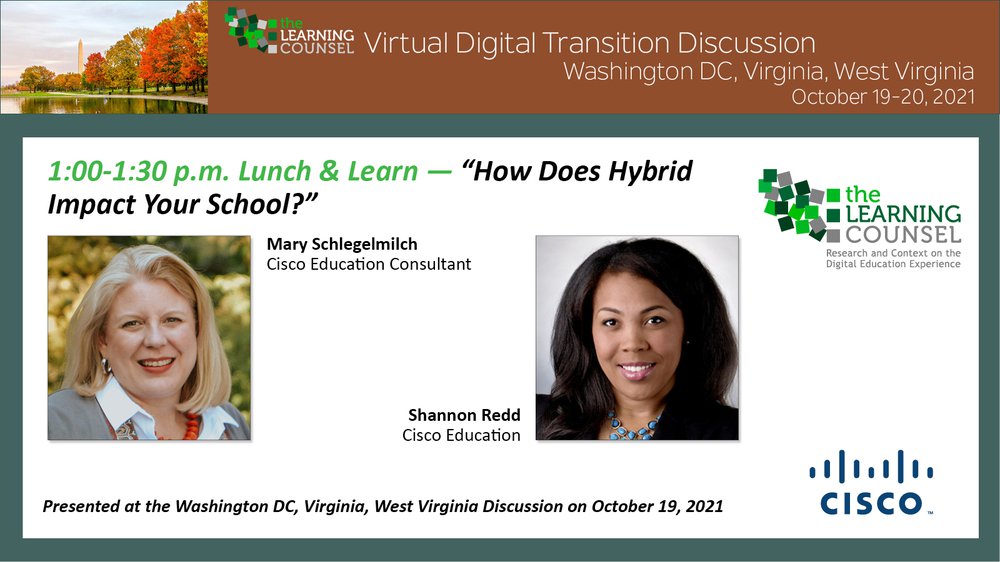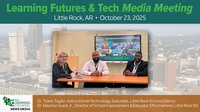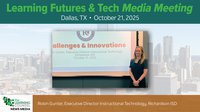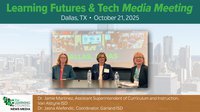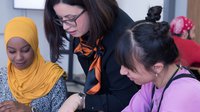It is amazing what your network can tell you now. As a company, Cisco was born into education. And they bring tremendous resources and effort into keeping your students safe and secure, all while providing systems that promote enhanced learning in and out of the classroom.
According to Mary Schlegelmilch, Cisco Education Consultant, “The classroom now knows through the devices that I bring with me as a teacher, it's going into my device and saying, ‘yes, the calendar says that you're teaching chemistry in five minutes.’ It pops it up on my screen and I can just do a one tap to join. I don't have to worry about a code to get in because it's all secure in the back end of it. But it's also very easy to use. When we think about these integrations of the classroom, we want to make sure that we can use any type of conferencing software, whether it be Microsoft Teams, Google, Zoom, or even the Cisco WebEx. We're platform agnostic. And we want to make sure that the video can follow the teacher automatically throughout the room, but also when one of the students are talking, can we have video that can help those students to engage with the remote students? Because remember, we're trying to create a classroom community just as if all of them were in person in our classroom. So, when we have that hybrid model, we want that community to extend into the virtual space as well.”
Shannon Redd with Cisco Education says, “We can talk about hybrid learning all day. We can talk about what needs to go into how we are educating our students. And that's what educators think about every day, right? But when we bring in technology, we have to be able to utilize it, to help tell a story through analytics, as well as support what you were trying to do with a strong network and security to make sure everything is secure across that network so that you can focus on delivering the education. We have technology available that can help you understand more of the environment of where you are providing the education and tell you where you need to adjust. We have density monitoring, where you can see a heat map of where people are gathering so that you're making sure you're keeping them safe.
“These can also extend to safety precautions where in the past, we haven't been able to get to altercations maybe at school when people are in-person. So this helps as well. Classroom capacity counting, making sure that we are staying within the guard rails of what keeps everyone safe. How many people are there with our WebEx room systems, proximity reporting, giving a history or retracing of where a device has been. Context is key to helping districts with the post pandemic requirements. It really comes into a holistic view of how we approach hybrid education. We have to think about the users we have. We have to think about the network. Is it agile? Is it strong? Is it going to be the most up-to-date so that it can manage all of the new devices and people who are entering on it? Is it secure so that we aren't letting the wrong things on? So we can focus on the education and the hybrid environments that we are providing, making sure we know the devices that are coming on to the network and providing users with those devices that are secure and also the applications needed to make it work holistically, meaning that these applications are integrated, they're seamless. The important thing is the flexibility. School systems are all different in a lot of ways, but school systems should also be able to figure out how's the best way to deliver their education.”
You’ll want to catch every moment of this fascinating Lunch and Learn presentation. Hybrid models go beyond what meets the eye. Want to know how your district is impacted? Cisco has answers.

